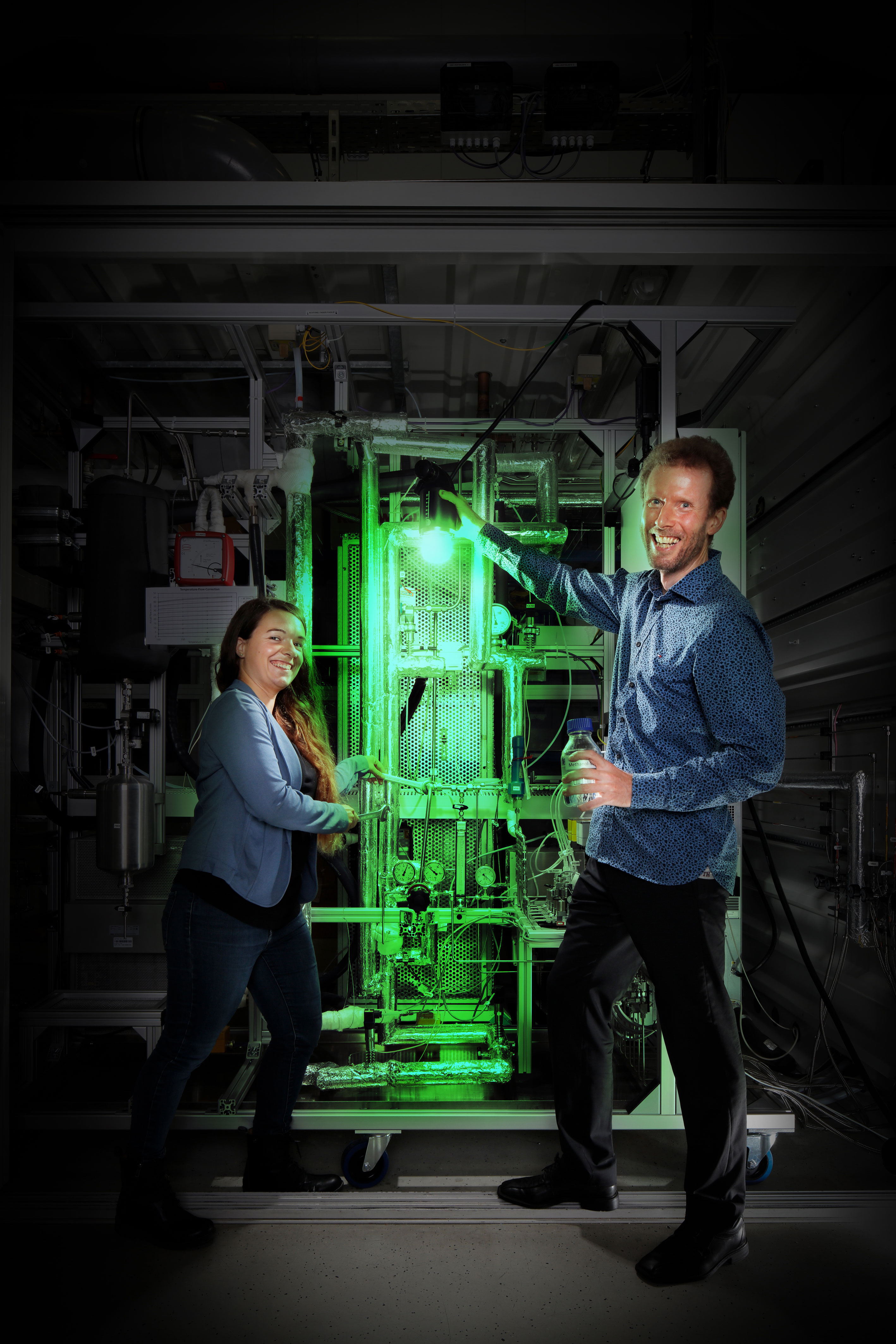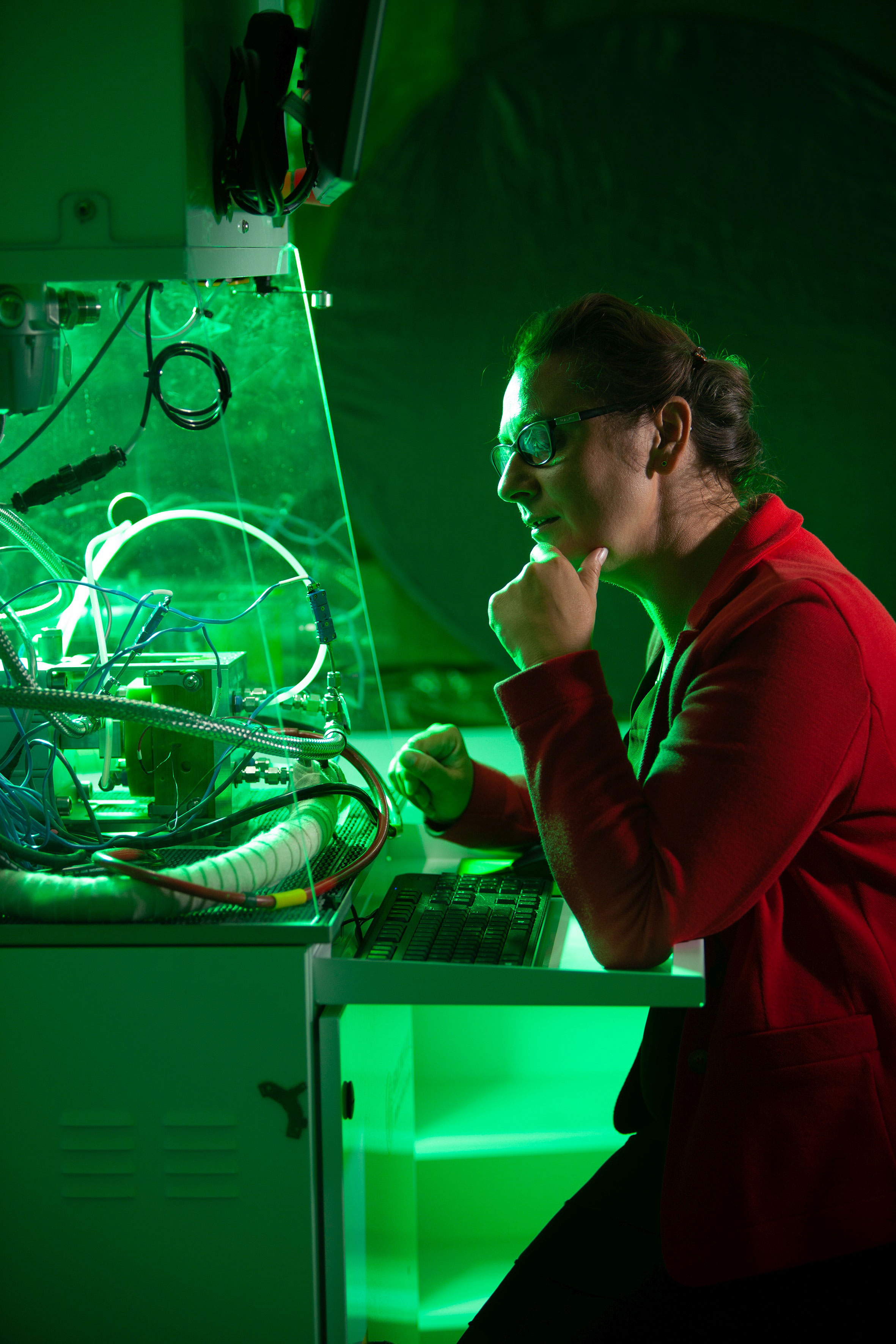How can sufficient (green) hydrogen be produced?


One problem hindering the advent of hydrogen-powered transport is a bottleneck in H2 production. This therefore requires substantial expansion. “In 2015, we had 21 megawatts of installed capacity for electrolysis,” explains Prof. Ralf B. Wehrspohn, Executive Vice President, Technology Marketing and Business Models, at the Fraunhofer-Gesellschaft. “By 2050, we will need 3000 times that, though not all of it for transport. In other words, we need to have capacity growth of between 1 and 5 gigawatts a year by 2030.” At present, the electrolyzers – which use electricity to generate hydrogen – are still produced largely by hand. To be able to produce this equipment in the requisite volume and with the requisite capacity, system reliability must be improved and suitable production technologies developed. This means automating the production of such equipment, upscaling production to an industrial level and thereby reducing production costs. Fraunhofer ISE, for example, is currently investigating how to reduce the costs of building electrolyzers. Here, researchers are developing new membrane materials, working to extend cell lifetime with an anticorrosion coating, and running endurance trials to test durability. Meanwhile, fellow researchers at the Fraunhofer Institute for Ceramic Technologies and Systems IKTS are combining high-temperature electrolysis with the Fischer-Tropsch Synthesis – an industrial process for coal liquefaction. This pilot plant is to be installed at a lime works belonging to the company Johann Bergmann. It will initially be upscaled to 10 kilowatts and then provide the basis for further upscaling.
All this development work to build larger electrolyzers must be accompanied by testing on an industrial scale. This will be possible at ELP, an electrolysis test and trial platform currently being built in Leuna by the Fraunhofer Institute for Microstructure of Materials and Systems IMWS and the Fraunhofer Center for Chemical-Biotechnological Processes CBP. This facility is scheduled to start operation at the beginning of 2021. “ELP will be the first test platform to provide technology-neutral system testing on this scale,” says Dr. Sylvia Schattauer, deputy director of Fraunhofer IMWS. “With a total connected load of 6 megawatts, the capacity of our four ELP sites will be significantly higher than the manufacturers’ own test capacity.” Moreover, the infrastructure is unique anywhere in Germany. The hydrogen produced at ELP – on the basis of a connected load of 6 megawatts, this can easily amount to several metric tons – will be fed into a 157-kilometer-long H2 pipeline operated by the company Linde. In other words, not only will hydrogen be efficiently generated in Leuna, but it will also be efficiently transported, via this pipeline, for use in the chemical parks of Central Germany, and in hydrogen stations and other projects. At the same time, the installation of the Hy2Chem upscaling platform, which is to be connected to the ELP, will mean that hydrogen generated on an industrial scale can be used for the sustainable production of basic chemicals and fuels.
When driven by green hydrogen – in other words, hydrogen generated by electrolyzers powered with renewable sources of energy – hydrogen-based transport makes sound ecological sense. This, however, leads to another problem: wind and solar energy fluctuate greatly, with the result that the electrolyzers often have to operate at different partial loads. What effect does this have on the electrolyzers? And how can they be best operated so that wind turbines no longer have to be shut down whenever there is an excess supply of electricity but can remain operational, with the surplus energy then being converted to hydrogen and stored in this form? Researchers from the Fraunhofer Institute for Wind Energy Systems IWES are currently investigating these questions. They plan to construct a 2-megawatt electrolyzer unit that will be capable of generating up to one metric ton of hydrogen a day. As of 2022, this new testing site will offer customers from industry the opportunity to trial their own electrolyzers and complete systems within a variety of grid scenarios.
A completely different approach to the production of green hydrogen – without electrolyzers and without wind or photovoltaic systems – is the focus of HyPerFerMent, a development project conducted by the Fraunhofer Institute for Factory Operation and Automation IFF together with partners. “We use a biogas unit to produce hydrogen from biowaste,” explains Dr. Torsten Birth, group manager at Fraunhofer IFF. The basic concept is simple: microorganisms produce carbon dioxide and hydrogen from biowaste in a process known as dark fermentation. This hydrogen is then separated off. “In the long term, this means that the 9500 biogas units currently active in Germany could not only contribute towards hydrogen production but also become more efficient and operate more economically than before,” Birth says. At present, researchers are investigating the process at the lab and pilot scale. In 2021 a pilot plant is to be connected directly to a biogas unit.